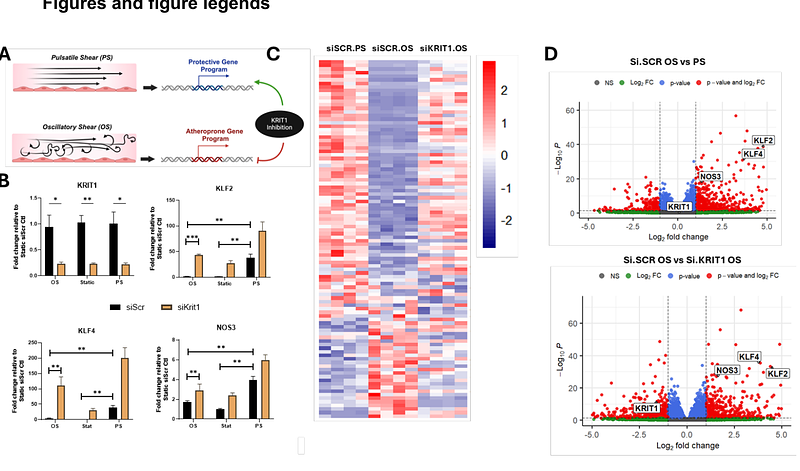Silencing KRIT1 Partially Reverses the Effects of Disturbed Flow onThe Endothelial Cell Transcriptome

Silencing KRIT1 Partially Reverses the Effects of Disturbed Flow onThe Endothelial Cell Transcriptome
Meecham, A.; McCurdy, S.; Frias-Anaya, E.; Li, W.; Gallego-Gutierrez, H.; Ngyuen, P.; Yi-Shuan Li, J.; Chien, S.; Shyy, J. Y.-J.; Ginsberg, M.; Lopez-Ramirez, M. A.
AbstractBackground: Endothelial cells respond to forces generated by laminar blood flow with changes in vasodilation, anticoagulant, fibrinolytic, or anti-inflammatory functions which preserve vessel patency. These responses to flow sheer stress are primarily mediated by the modulation of transcription factors Kruppel-like factors 2 and 4 (KLF2 and KLF4). Notably, disturbed flow patterns, which are found in vascular areas predisposed to atherosclerosis, significantly reduce the endothelial expression of KLF2 and KLF4, resulting in changes in the transcriptome that exacerbate inflammation and thrombosis. The endothelial CCM complex, comprising KRIT1, CCM2, and CCM3, suppresses the expression of KLF2 and KLF4. Loss of function of the CCM complex has recently been suggested to protect from coronary atherosclerosis in humans. We thus hypothesized that silencing of KRIT1, the central scaffold of the CCM complex, can normalize the atherogenic effects of disturbed flow on the human endothelial transcriptome Methods: Bulk RNA sequencing (RNA-seq) was conducted on human umbilical vein endothelial cells (HUVECs) after the expression of KRIT1 was silenced using specific siRNAs. The endothelial cells were exposed to three different conditions for 24 hours: pulsatile shear stress (laminar flow), oscillatory shear stress (disturbed flow), and static conditions (no flow). Results: We found that silencing KRIT1 expression in HUVECs restored the expression of the transcription factors KLF2 and KLF4 under oscillatory shear stress. This treatment resulted in a transcriptomic profile similar to that of endothelial cells under pulsatile shear stress. These findings suggest that inhibition of the CCM complex in endothelium plays a vasoprotective role by reactivating a protective gene program to help endothelial cells resist disturbed blood flow. Conclusions: Targeting CCM genes can activate well-known vasoprotective gene programs that enhance endothelial resilience to inflammation, hypoxia, and angiogenesis under disturbed flow conditions, providing a novel pathway for preventing atherosclerosis.